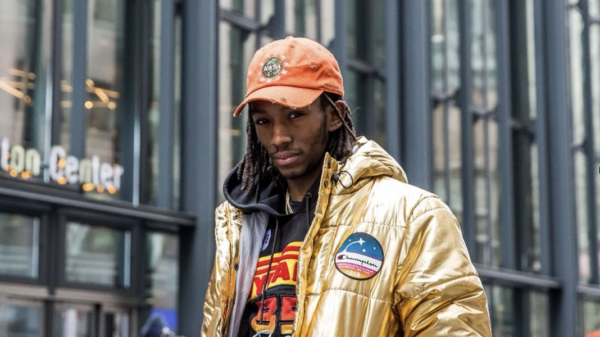(In 2018, the Billboard staff released a list project of its choices for the Greatest Pop Star of every year, going back to 1981. Read our entry below on why Mariah Carey was our Greatest Pop Star of 1991 — with our ’91 Honorable Mention runner-ups, Rookie of the Year and Comeback of the Year pop stars at the bottom — and find the rest of our picks for every year up to present day here.)
Explore
Explore
See latest videos, charts and news
See latest videos, charts and news
“I want to be around for a while,” Mariah Carey told the New York Times in September, 1991, two days before the release of her second album, Emotions. She was 21 years old, a self-described studio rat and workaholic — the playful diva character she cultivated and inhabits so well was still waiting in the wings. (The bit where she says she won’t tour because “I need a lot of sleep” tips her hand a little, maybe.) She wasn’t being tongue-in-cheek about sticking around, and you, the reader, were meant to wonder if she’d manage where others so often fail.
Dig if you will a time when Mariah’s star power was far from assured, when practically a year’s worth of coverage from the Times pondered and doubted. Could she skirt sophomore slump and match the staggering success of her self-titled debut, which had earned her a best new artist Grammy that February that pushed the album — by then eight months old — to No. 1 on the Billboard 200, where it luxuriated for 11 straight weeks? What was the label doing differently this time around? Was Tommy Mottola, then the president of Sony Music and her rumored boyfriend, too reckless and hung up on clout?
The dramatic irony is delicious. Bucking record biz wisdom by releasing her second album less than 18 months after her debut, Emotions put Carey in the record books and asserted her desire for creative control. (Carey is credited as a co-producer and co-writer on every song.) Though it sold less than her self-titled, Emotions made Carey the first and only act to have their first five singles reach No. 1 on the Hot 100, when the C+C Music Factory-assisted “Emotions” — her first major foray into club music, a space where she excelled in the ‘90s — topped the chart on October 12.
Between the release cycles for Mariah Carey and Emotions, there was never a moment when Carey wasn’t on your radar — in clubs, on the radio, in your Walkman, on your television, on the covers of magazines like New York and Jet. “I Don’t Wanna Cry,” the tear-jerker fourth single from the self-titled LP, topped the Hot 100 in March, just a month after her Grammys debut, where she left the crowd and viewers at home stunned by a powerful rendition of “Vision of Love.” She owned the year, with her softly curled hair and whistle-register vocal punches, on display in the first-ever live televised performance of “Emotions,” at the MTV Video Music Awards in early September.
In 1991, the Times published a letter from a smug, incredulous reader who had a hard time believing that Carey possessed a five-octave range, as the Gray Lady had described. Well Linda Lister, of Poughkeepsie, here’s Mariah’s performance of the deep-cut classic “If It’s Over,” from the next year’s Grammys. Eat your heart out.
Honorable Mention: Michael Jackson (Dangerous, “Black or White,” $65 million Sony contract extension), Garth Brooks (Ropin’ the Wind, “The Thunder Rolls,” “Shameless”), Color Me Badd (C.M.B., “I Wanna Sex You Up,” “I Adore Mi Amor”)
Rookie of the Year: Boyz II Men
They were teenagers, the three vocalists and their producer, and none of them had made an album before. In about six weeks, the four guys from Philadelphia (Nathan Morris, Wanya Morris, Michael McCary and Shawn Stockman) wrote and recorded with Georgia’s Dallas Austin. By November ‘91, Boyz II Men’s Cooleyhighharmony — rushed out by Motown after the caffeinated single “Motownphilly” started blowing up — was certified 2x platinum, buoyed by the marathon climb of its lead single (with a kinetic, color-blocked video) to No. 3 on the Hot 100. That they could balance their contemporary twist on doo-wop harmonies with real old-school ballads like “It’s So Hard To Say Goodbye to Yesterday” made them the total package.
Comeback of the Year: Amy Grant
The lines lit up when the song played. As requested as the song was, it drew controversy too: Callers were shaken, angry, with the head of program management at KLTY Dallas telling Billboard that listeners would say the song “reminds me too much of the old life that I came out of.” It was April 1991 and Amy Grant’s “Baby Baby” — a soft, upbeat pop song without explicit references to faith — was triggering to many Christian radio listeners. But it was the No. 1 song in the country, the biggest solo hit from the devout singer-songwriter, who had been releasing music since the late ‘70s and had walked into comeback discord by writing a buoyant love song about… her daughter. Didn’t stop Grant for more than a minute, though, the controversy ultimately becoming a blip in the rise of one of the early ‘90s’ most reliable pop radio hitmakers.
(Read on to our Greatest Pop Star of 1992 here, or head back to the full list here.)

























